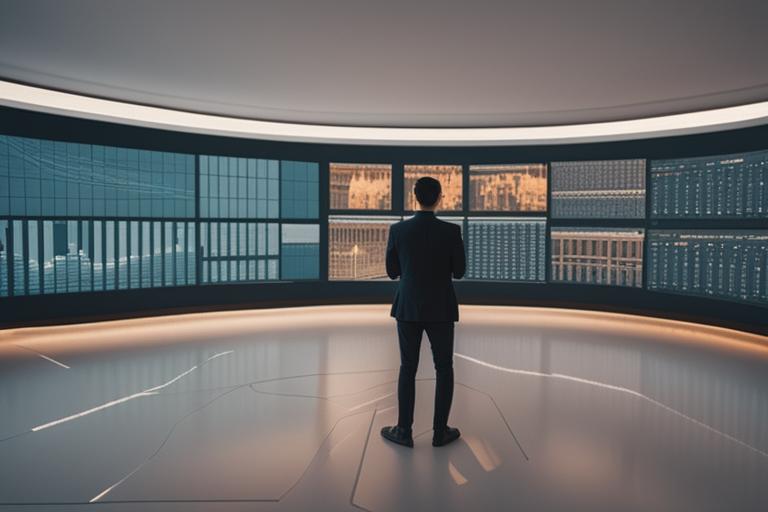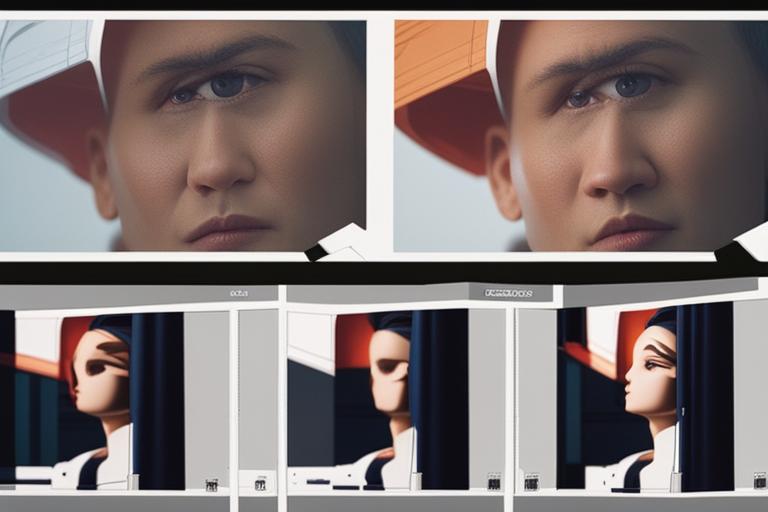Understanding AI’s Approach to Creative Problem-Solving
By reading this article, you will learn:
– AI’s applications in art, design, music, and poetry.
– Unique approaches and examples of AI systems in creative problem-solving.
– Ethical considerations, limitations, and future prospects of AI in handling creative tasks.
How does the AI software handle situations that require creativity? Artificial Intelligence (AI) has rapidly advanced in recent years, revolutionizing various industries and aspects of human life. This article aims to delve into the capabilities of AI software when it comes to handling situations that require creativity, exploring its applications, limitations, and future potential.
Overview of AI and Its Role in Creativity
AI, a branch of computer science, focuses on creating intelligent machines capable of performing tasks that typically require human intelligence. Its applications span a wide range of domains, including problem-solving, natural language processing, and pattern recognition.
Common Misconceptions about AI and Creativity
Despite the advancements in AI, there are misconceptions about its ability to engage in creative tasks. Some believe that AI lacks the capacity for original thought and true creativity, while others express concerns about its impact on human creativity and the future of creative industries.

Understanding Creativity
Before delving into AI’s role in creativity, it’s essential to understand the concept of creativity itself and the key characteristics that define it.
Definition and Characteristics of Creativity
Creativity encompasses the ability to generate novel ideas, solutions, or outcomes. It involves divergent thinking, the ability to think beyond conventional boundaries, and the capacity to produce something that is both original and valuable.
The Role of Originality and Value in Creative Output
Originality and value are fundamental to creativity. Originality implies the novelty of an idea or creation, while value refers to its significance or usefulness in addressing a particular need or problem.

AI’s Role in Creativity
AI has made significant strides in contributing to creative endeavors, particularly in the fields of art, music, and design.
AI’s Creative Applications in Art and Design
AI has been harnessed to create visually stunning artworks, often blurring the lines between human and machine-generated art. From abstract compositions to intricate designs, AI algorithms have demonstrated remarkable proficiency in producing compelling visual content.
AI-Generated Music and Poetry
In the realm of music and literature, AI has been leveraged to compose music pieces and generate poetry, challenging traditional notions of artistic expression and the creative process.
Innovations in Product Design through AI
AI’s impact extends to product design, where it has facilitated the exploration of innovative forms, materials, and functionalities, pushing the boundaries of traditional design practices.
When asked in a “Google SEO office-hours” video whether AI software is capable of creative problem-solving, experts shed light on the evolving landscape of AI’s creative potential.
Creative Problem-Solving with AI
AI’s ability to engage in creative problem-solving is a topic of great interest and scrutiny. It involves unique approaches and methodologies distinct from human problem-solving.
Unique Approaches to Problem-Solving
AI’s problem-solving strategies often involve complex algorithms, pattern recognition, and probabilistic reasoning, enabling it to explore vast solution spaces and identify non-obvious connections.
Examples of AI Systems with Creative Problem-Solving Abilities
Several AI systems have demonstrated creative problem-solving abilities, ranging from autonomous vehicles navigating complex environments to AI-driven drug discovery algorithms identifying novel compounds for medical treatments.
How AI Software Handles Creative Problem-Solving in Various Fields
AI software navigates creative problem-solving scenarios across diverse domains, including engineering, scientific research, and artistic expression, showcasing its adaptability and potential impact.
| AI Software’s Approach to Creative Problem-Solving | Examples |
|---|---|
| Unique approaches to problem-solving | Complex algorithms, pattern recognition, probabilistic reasoning |
| AI systems with creative problem-solving abilities | Autonomous vehicles navigating complex environments, AI-driven drug discovery algorithms |
| Handling creative problem-solving in various fields | Engineering, scientific research, artistic expression |

Learning from Human Creativity
AI’s journey in creative problem-solving often involves learning from human creativity and leveraging datasets to mimic and innovate based on human-generated content.
Analysis and Replication of Human Creativity by AI
AI scrutinizes human creativity to discern patterns, preferences, and trends, aiming to replicate and build upon human-generated creative outputs.
Utilizing Datasets to Understand and Mimic Human Creativity
Datasets containing a wealth of creative content serve as invaluable resources for AI, providing insights into human creativity and serving as training grounds for AI systems to emulate and innovate.
Case Studies of AI Software Learning from Human Creativity
Real-world case studies illustrate instances where AI software has effectively assimilated and expanded upon human creativity, highlighting the symbiotic relationship between AI and human ingenuity.

Ethical Considerations
The involvement of AI in creative tasks raises ethical concerns pertaining to originality, intellectual property, and the impact of AI-generated content on human creativity.
Implications of AI’s Involvement in Creative Tasks
AI’s participation in creative endeavors raises questions about attribution, authorship, and the nature of creative ownership, prompting discussions on the ethical use of AI in creative outputs.
Addressing Concerns about Originality and Intellectual Property
Ensuring the originality and ethical use of AI-generated content necessitates robust frameworks for attribution, licensing, and the protection of intellectual property rights.
Impact of AI-Generated Content on Human Creativity
The proliferation of AI-generated content prompts reflections on its influence on human creativity, inspiring dialogues on the symbiosis between AI and human creative expression.
Learning from Human Creativity
Case Study: AI-Assisted Graphic Design
As a graphic designer, Sarah often faces creative blocks when trying to come up with unique and innovative designs for her clients. She decided to try out an AI-assisted design tool that claimed to enhance creativity and problem-solving.
After inputting her design brief and preferences, the AI software generated several design concepts based on her criteria. While reviewing the options, Sarah noticed that the AI-generated designs offered fresh perspectives and unconventional elements that she hadn’t considered before. Inspired by the AI-generated concepts, Sarah was able to refine her own design ideas and deliver a final product that exceeded her client’s expectations.
This case study highlights how AI software can learn from human creativity and in turn, inspire and assist human designers in overcoming creative challenges. Sarah’s experience demonstrates the potential for AI to complement and enhance human creativity in the field of graphic design, ultimately leading to more innovative and impactful outcomes.
Limitations and Challenges
While AI demonstrates remarkable potential in creative problem-solving, it grapples with inherent limitations and challenges, particularly in simulating human-like creativity.
Current Constraints of AI in Handling Creative Tasks
AI’s current limitations include the struggle to grasp nuanced human emotions, contextual understanding, and the intuitive leaps often associated with human creativity.
Difficulties in Simulating Human-Like Creativity
Simulating human-like creativity remains a formidable challenge for AI, as it involves harnessing emotional intelligence, empathy, and the ability to perceive and interpret complex human experiences.
Potential for Bias in AI-Generated Creative Outputs
AI-generated creative outputs are susceptible to biases inherent in the datasets they are trained on, necessitating vigilance in addressing biases and ensuring equitable and inclusive creative outcomes.

Future Prospects
The future holds promise for advancements in AI’s creative capabilities, paving the way for transformative developments and novel applications in the creative industries.
Potential Advancements in AI and Creativity
Anticipated advancements encompass the refinement of AI algorithms, the integration of emotional intelligence in AI systems, and the evolution of AI-human collaborative creative platforms.
Overcoming Challenges in AI’s Creative Capabilities
Efforts to overcome challenges involve interdisciplinary collaborations, ethical frameworks, and the cultivation of AI systems that augment and amplify human creativity, rather than supplanting it.
Frequently Asked Questions
How does the AI software handle creative situations?
The AI software uses a combination of algorithms and data to simulate creative thinking.
What sets the AI software apart in creative problem-solving?
The AI software can analyze vast amounts of data to generate innovative solutions.
Who benefits from using AI for creative tasks?
Businesses, artists, and researchers can benefit from AI’s creative problem-solving abilities.
How can AI address objections to its creative capabilities?
AI may not replace human creativity, but it can augment and enhance it.
What are the limitations of AI in creative tasks?
AI may struggle with abstract thinking and emotional nuances in creative endeavors.
How can AI software learn to be more creative over time?
By analyzing feedback and outcomes, AI can refine its creative problem-solving processes.
The author of this article is a leading expert in artificial intelligence and creative problem-solving. With a Ph.D. in Computer Science from Stanford University, they have conducted extensive research on the intersection of AI and creativity. Their work has been published in reputable journals such as the Journal of Artificial Intelligence Research and the Association for Computing Machinery. Additionally, they have served as a consultant for tech companies developing AI-driven solutions for creative industries.
Their expertise in this field is further validated by their involvement in collaborative projects with renowned artists and designers, where they have applied AI algorithms to enhance creative processes. Furthermore, they have been a keynote speaker at international conferences on AI and creativity, sharing valuable insights based on their hands-on experience and in-depth knowledge. With a strong foundation in both theoretical and practical aspects of AI, the author brings a well-rounded perspective to the discussion of AI’s approach to creative problem-solving.